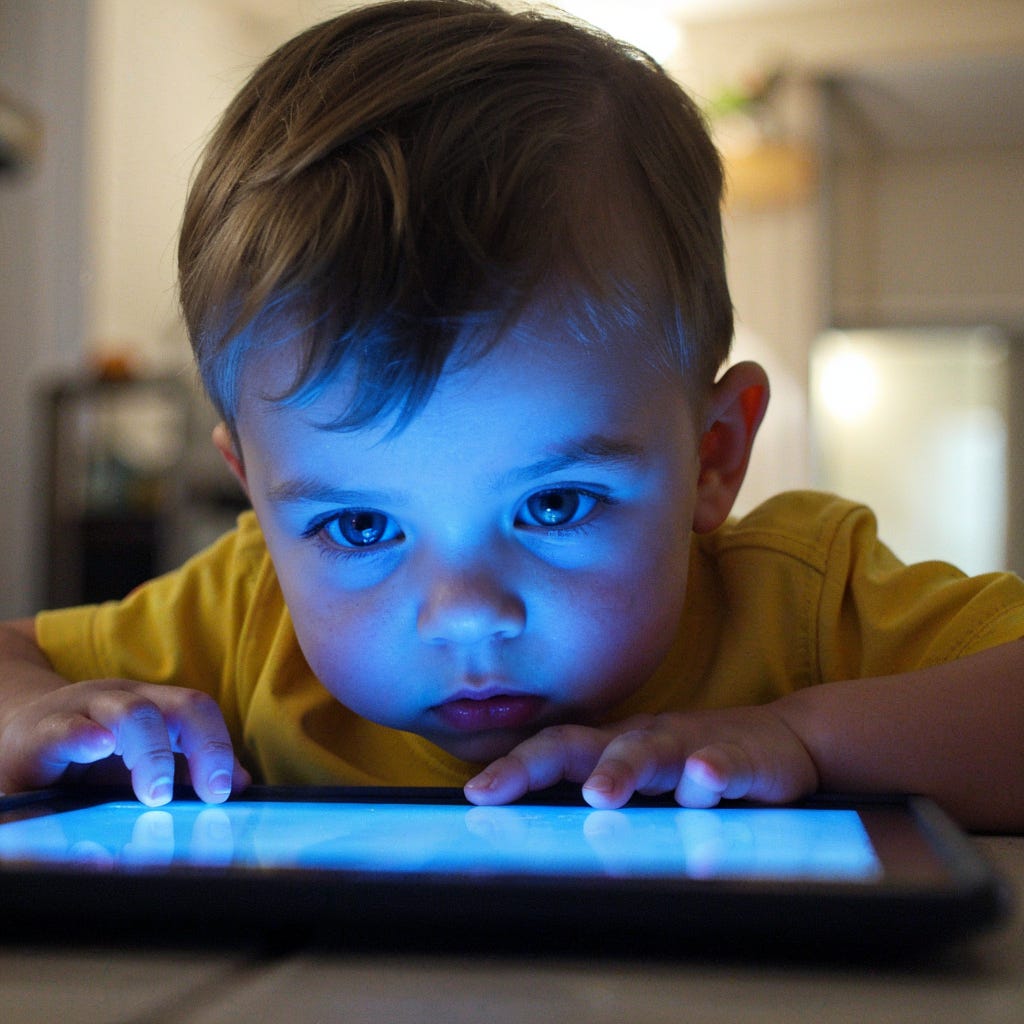How Small Screens Are Hurting Our Eyes- Part 1: Myopia
Screen Time and Eye Health: What We’re Learning
The rise in digital screen time, especially among younger populations, could be fueling an increase in myopia worldwide. Here’s what current evidence suggests about screens and eye health.
Screen Time’s Growing Role
Screen Time is on the Rise
More than ever, screens are a part of everyday life—for school, work, and leisure. Studies show children and adolescents are now spending over three hours on screens daily. Increased screen time, particularly close to the face, is linked with a higher risk of developing myopia.
Viewing Distance Matters: Holding screens close strains the eyes and prompts structural changes like axial lengthening—a critical factor in myopia development. Axial lengthening means the eyeball grows slightly longer than normal. This may seem like a small change, but it makes a big difference in how we see. When the eyeball lengthens, light entering the eye doesn't focus correctly on the retina (the back part of the eye that sends visual signals to the brain). Instead, it focuses in front of the retina, which makes distant objects look blurry.
Consistent Patterns Across Studies: While some studies show a direct connection between screen time and myopia, others show weaker links. Still, a consistent trend is emerging: more screen time, especially with other close-up activities, aligns with increased myopia cases.
Why the Link to Myopia is Still Uncertain
Challenges in Consistency
Although research shows patterns, different ways of measuring screen time and diagnosing myopia lead to inconsistencies.
Self-Reported Data: Many studies use self-reported screen use, which can vary widely. There is no objective measurement of screen use (like with an app). Also, few studies use clinical myopia tests, making cross-study comparison difficult.
Cross-Sectional vs. Longitudinal Findings: Strongest links are found in cross-sectional data, capturing a single point in time but not cause and effect. Longitudinal studies tracking changes over time tend to show weaker connections, questioning if screen time is a direct cause or just a correlation.
Influence of Additional Factors
Outdoor time, genetics, and lifestyle choices also play roles in eye health, often clouding the screen-time connection. Spending time outdoors, for instance, has a protective effect against myopia, adding complexity to the screen-time hypothesis.
Moving Forward: Practical Eye Health Tips
While the link between screens and myopia isn’t fully proven, adopting balanced habits can help protect vision:
Moderate Screen Use: Reducing screen time, especially for young children, can help alleviate eye strain and reduce potential risks.
Incorporate Outdoor Activities: Time outside supports eye health and reduces myopia risk.
Practice Healthy Screen Habits: Keeping screens at a safe distance of 16 inches (40 centimeters) and taking regular breaks.
Conclusion
Caution around screen use and balanced habits can support better eye health. As we navigate our digital age, these small changes may make a big difference in preventing vision issues.
Bibliography
Foreman, J., Salim, A. T., Praveen, A., Fonseka, D., Ting, D. S. W., He, M. G., Bourne, R. R. A., Crowston, J., Wong, T. Y., Dirani, M., 2021. Association between digital smart device use and myopia: a systematic review and meta-analysis. The Lancet Digital Health, 3(12), e806-e818. https://doi.org/10.1016/S2589-7500(21)00135-7






